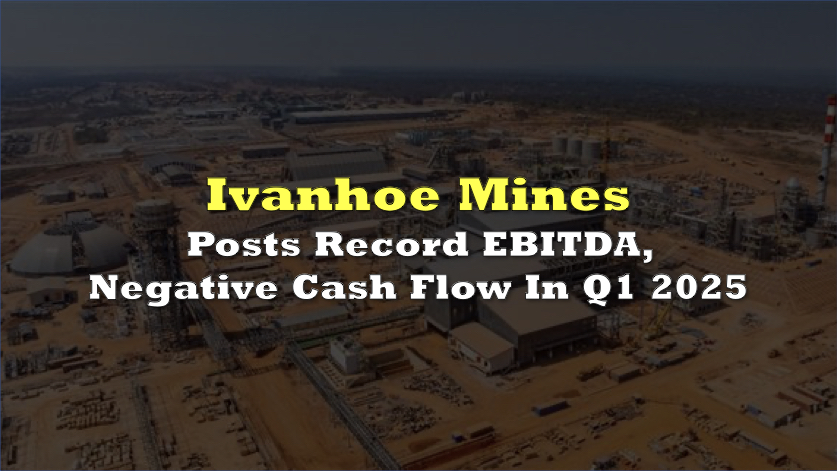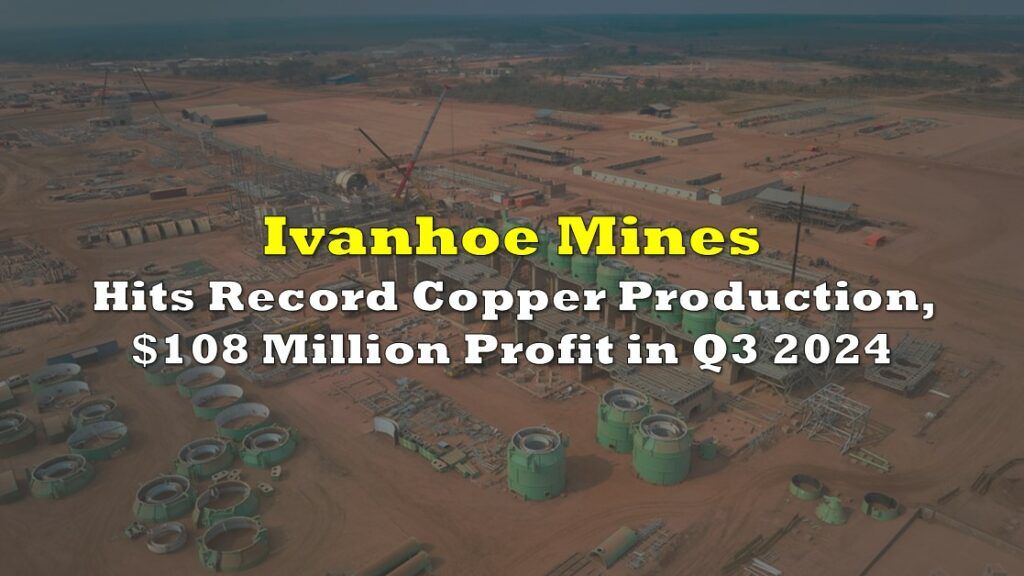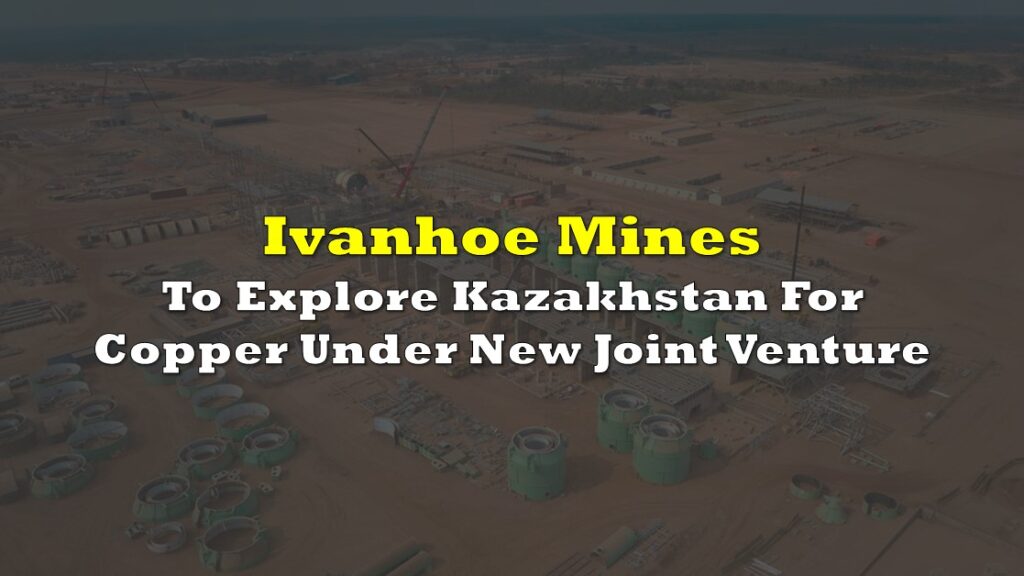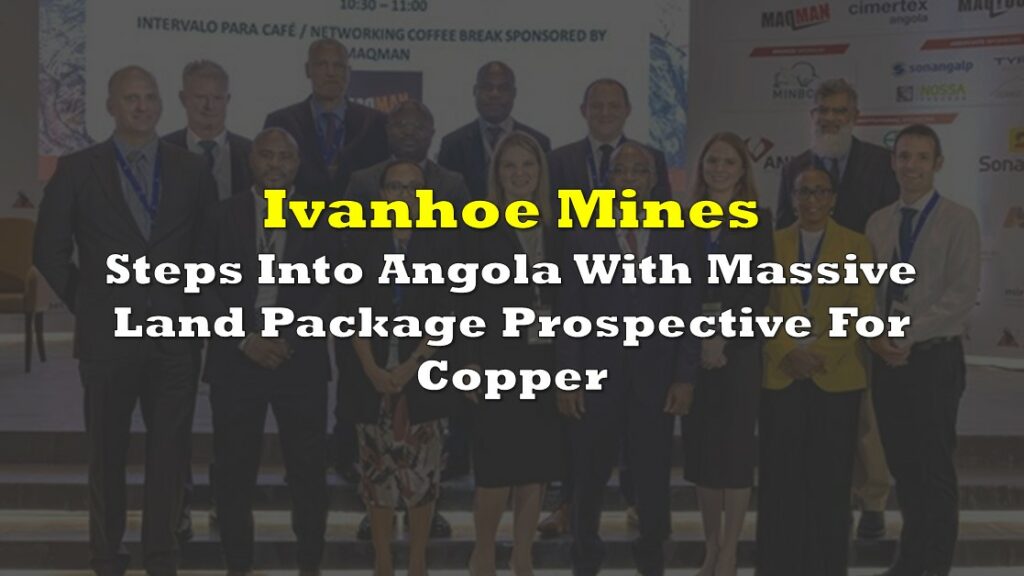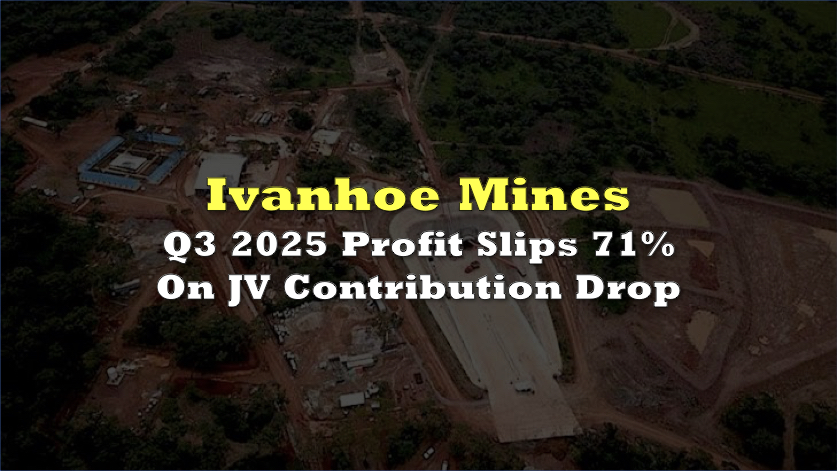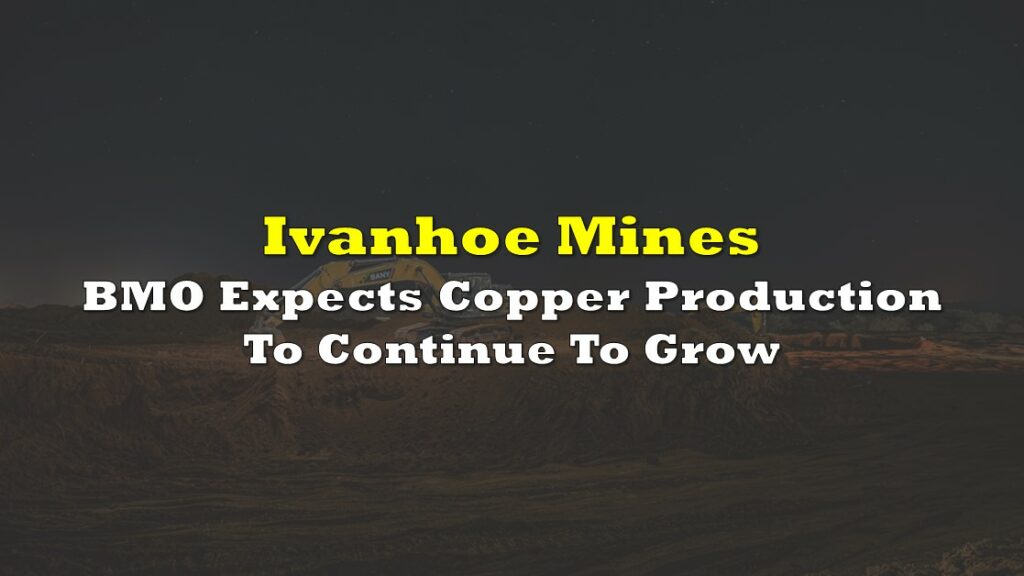Ivanhoe Mines (TSX: IVN) reported first-quarter 2025 earnings that reflect strong top-line growth driven by record copper production at Kamoa-Kakula, yet culminated in a free cash flow shortfall from its flagship joint venture.
Kamoa-Kakula generated $973 million in revenue in Q1 2025, marking a 57% increase from $618 million in Q1 2024 and a 14% rise from $851 million in Q4 2024. The joint venture delivered $585 million in EBITDA for the quarter, reflecting a 60% margin — boosted in part by a $51 million uplift from higher copper price remeasurements.
Ivanhoe posted a Q1 2025 net profit of $122 million ($0.10 per share), an improvement from a $69 million loss in Q1 2024 and up from $88 million in Q4 2024. Adjusted EBITDA soared to a record $226 million, up 66% from $136 million the previous quarter. This growth was primarily driven by Ivanhoe’s 49.5% share of the Kamoa-Kakula joint venture, which generated $142 million in income, up from $127 million in Q4 and $101 million a year ago.
However, despite a slight drop in copper sales volumes (109,963 tonnes vs. 112,881 tonnes in Q4), costs per pound remain elevated. Cash costs were $1.69 per pound in Q1 2025, lower than $1.75 per pound in Q4. Cost of sales per pound sold remained high at $1.87 per pound.
Sales continued to lag production due to a growing inventory buildup, now at 48,000 tonnes — a 60% jump from end-2024.
At Kipushi, zinc sales rose to 30,108 tonnes from 16,999 tonnes in Q4, generating $77 million in revenue. However, the segment recorded a slim EBITDA of $11 million due to cost of sales at $1.23 per pound, just above guidance. Cash costs landed at $0.93 per pound, also keeping within expectations.
Despite strong earnings and EBITDA, Ivanhoe Mines’ Kamoa-Kakula joint venture recorded a negative free cash flow of $6.2 million in Q1 2025. Net cash from operations before working capital adjustments rose to $556 million vs. $338 million in Q1 2024. Working capital swings, including inventory buildup and receivables, drained $509 million.
Capital expenditure remained elevated at $297 million in Q1 for Kamoa-Kakula (including $207 million expansion and $90 million sustaining), and $84 million across Ivanhoe’s other projects. Total capex at Platreef reached $54 million, while Kipushi saw $20 million in development spend.
Ivanhoe’s cash surged from $117 million at year-end 2024 to $717 million, primarily due to a $750 million senior notes offering closed in January. This led to an increase in total assets to $6.6 billion from $5.7 billion in Q4 2024, fueled by debt-funded cash, a $142 million increase in Kamoa-Kakula JV investment, and capitalized project development. Total liabilities spiked to $1.63 billion from $902 million, with the new senior notes comprising the bulk of the increase.
Q1 copper production at Kamoa-Kakula was 133,120 tonnes, essentially flat from the Q4 record of 133,819 tonnes, but up 55% from 86,117 tonnes in Q1 2024. Annualized production is running at 614,000 tonnes, with April’s output expected to hit 50,000 tonnes — a new monthly record.
Milling performance also exceeded design rates, with 3.7 million tonnes processed at 87.4% recovery. Grades remained robust, with Phases 1 and 2 averaging 5.01% and Phase 3 at 2.76%. Smelter commissioning is underway, with first blister copper production set for July.
Kipushi produced 42,736 tonnes of zinc at a record grade of 32.5% during ramp-up. Debottlenecking is 66% complete and expected to lift nameplate capacity by 20% by Q3 2025.
Ivanhoe reaffirmed full-year production guidance: 520,000–580,000 tonnes of copper and 180,000–240,000 tonnes of zinc. Capital guidance for Kamoa-Kakula in 2025 remains heavy at $1.42–$1.67 billion, with additional capex expected at Platreef and Kipushi. Operating cash flows are projected to cover capital costs at current copper prices.
Ivanhoe Mines last traded at $13.53 on the TSX.
Information for this briefing was found via the sources mentioned. The author has no securities or affiliations related to this organization. Not a recommendation to buy or sell. Always do additional research and consult a professional before purchasing a security. The author holds no licenses.

